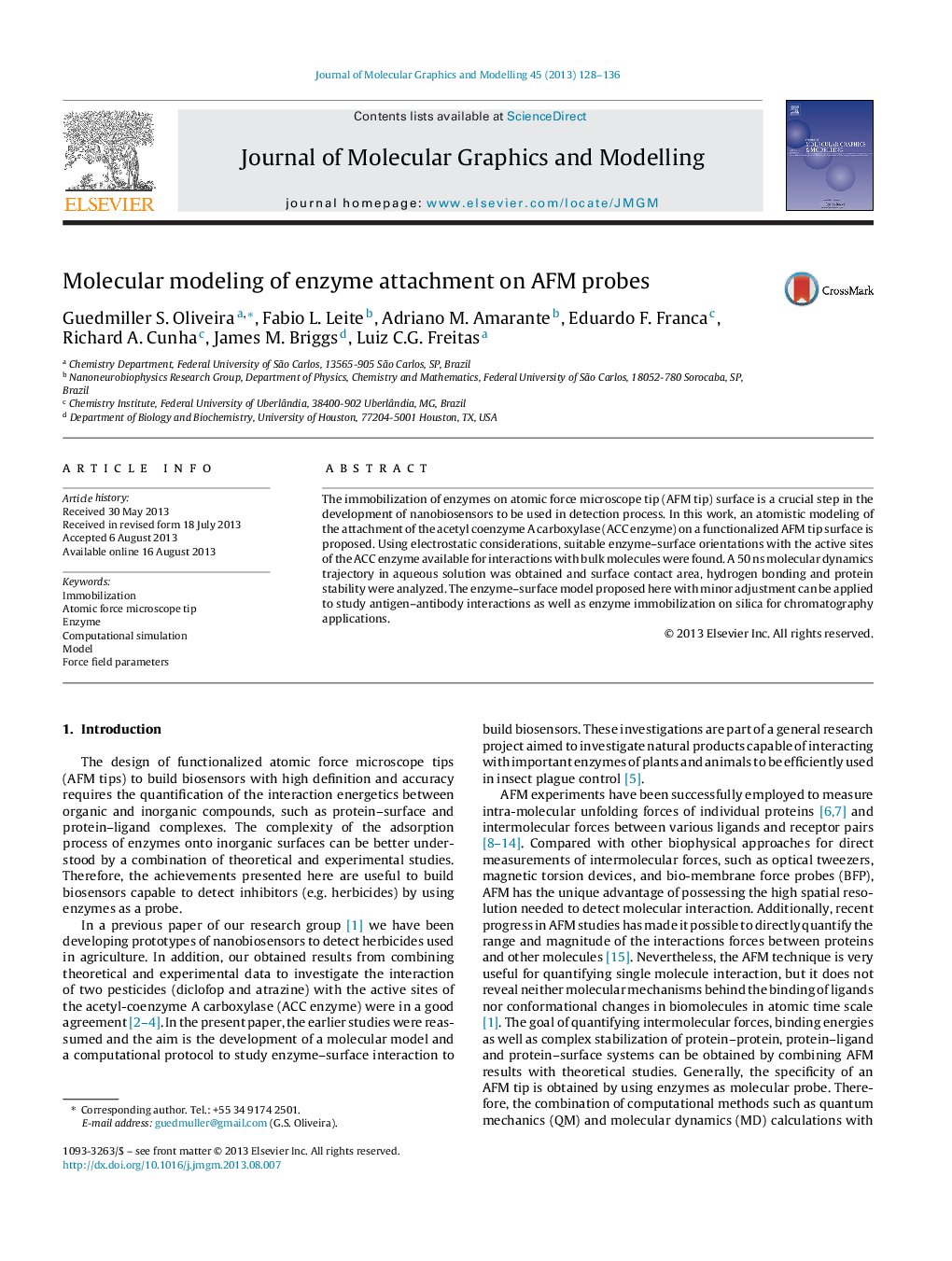| Article ID | Journal | Published Year | Pages | File Type |
|---|---|---|---|---|
| 443632 | Journal of Molecular Graphics and Modelling | 2013 | 9 Pages |
•A computational enzyme–surface model was proposed.•Force field parameters to run molecular dynamic simulation were calculated to represent the functionalized surface.•Three geometrical orientation of the enzyme on the surface was scored.•Hydrogen bonding, surface contact area and protein stability were analyzed.
The immobilization of enzymes on atomic force microscope tip (AFM tip) surface is a crucial step in the development of nanobiosensors to be used in detection process. In this work, an atomistic modeling of the attachment of the acetyl coenzyme A carboxylase (ACC enzyme) on a functionalized AFM tip surface is proposed. Using electrostatic considerations, suitable enzyme–surface orientations with the active sites of the ACC enzyme available for interactions with bulk molecules were found. A 50 ns molecular dynamics trajectory in aqueous solution was obtained and surface contact area, hydrogen bonding and protein stability were analyzed. The enzyme–surface model proposed here with minor adjustment can be applied to study antigen–antibody interactions as well as enzyme immobilization on silica for chromatography applications.
Graphical abstractA computational model to describe the enzymatic attachment of the ACC enzyme on a modified AFM tip surface was proposed. The energetically favorable enzymatic orientations on inorganic surfaces were investigated in order to comprehend the main interactions forces involved. The computational protocol created here will assist the experimental unknown events.Figure optionsDownload full-size imageDownload high-quality image (157 K)Download as PowerPoint slide
